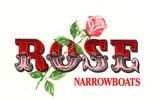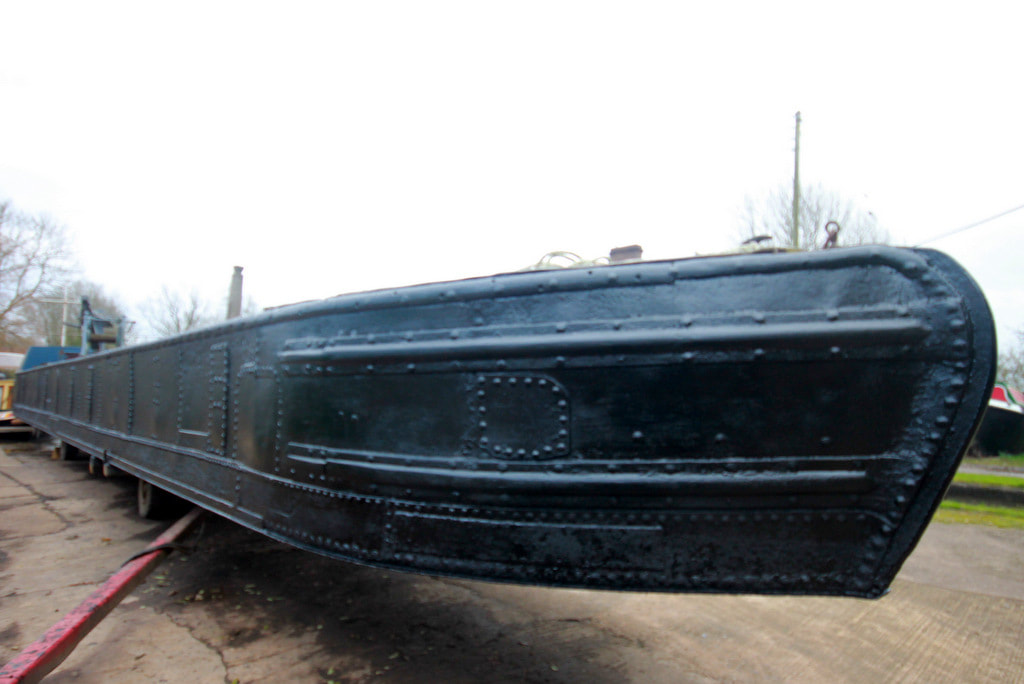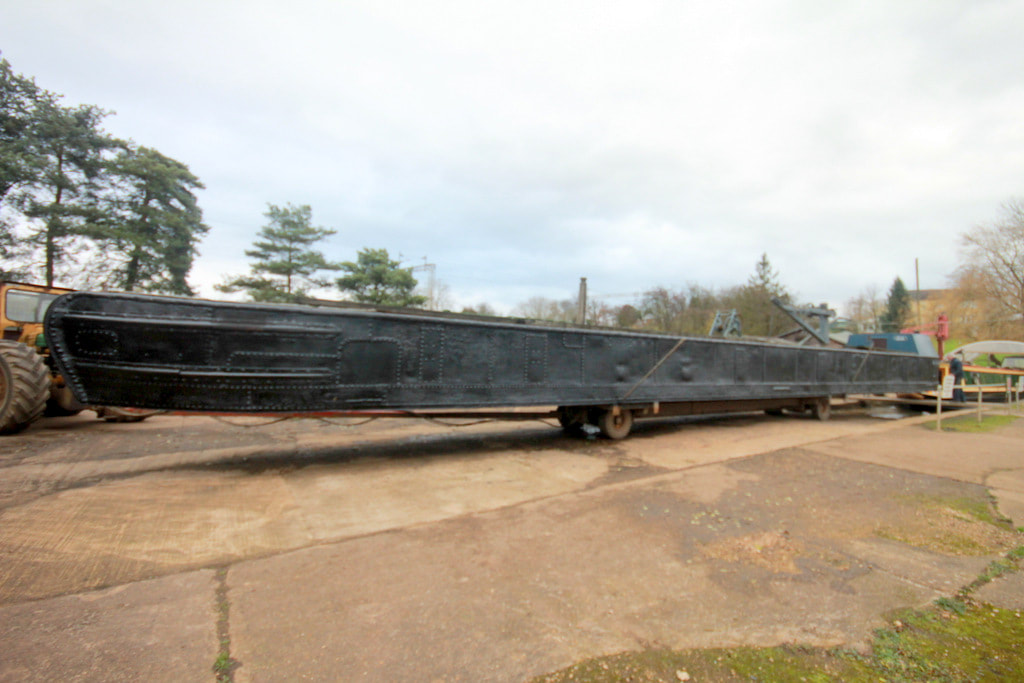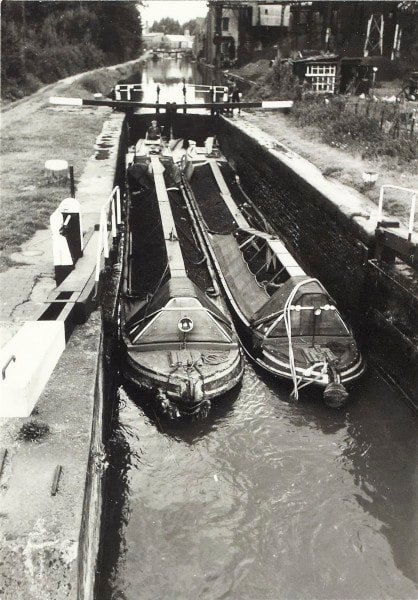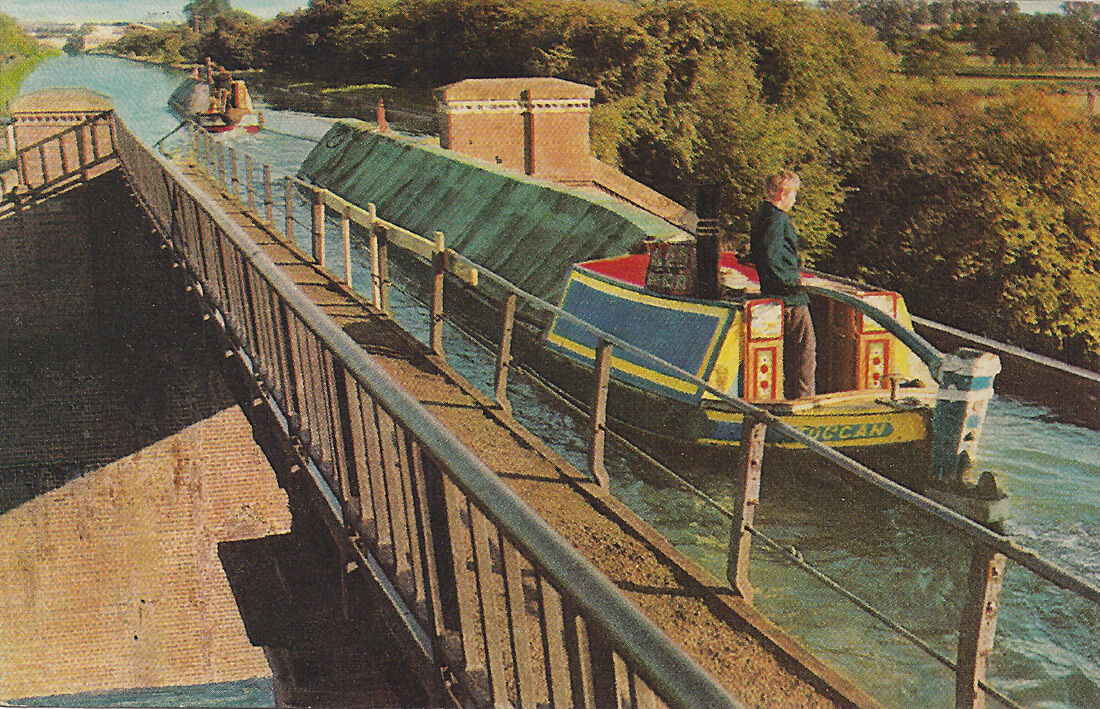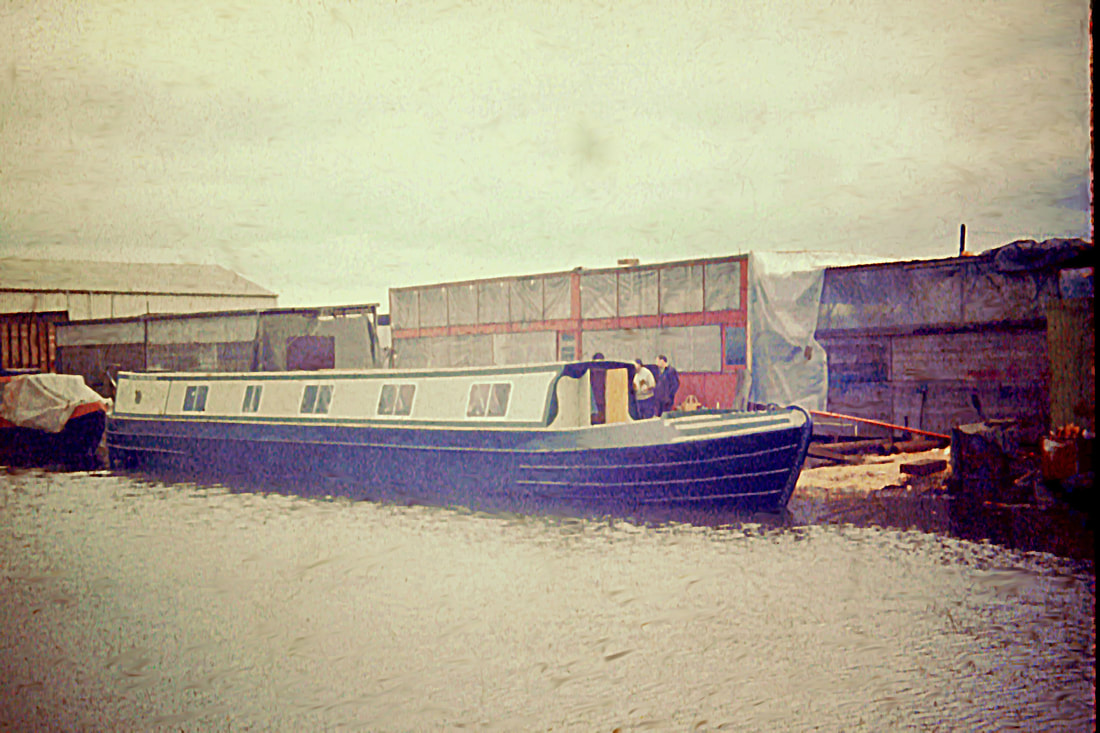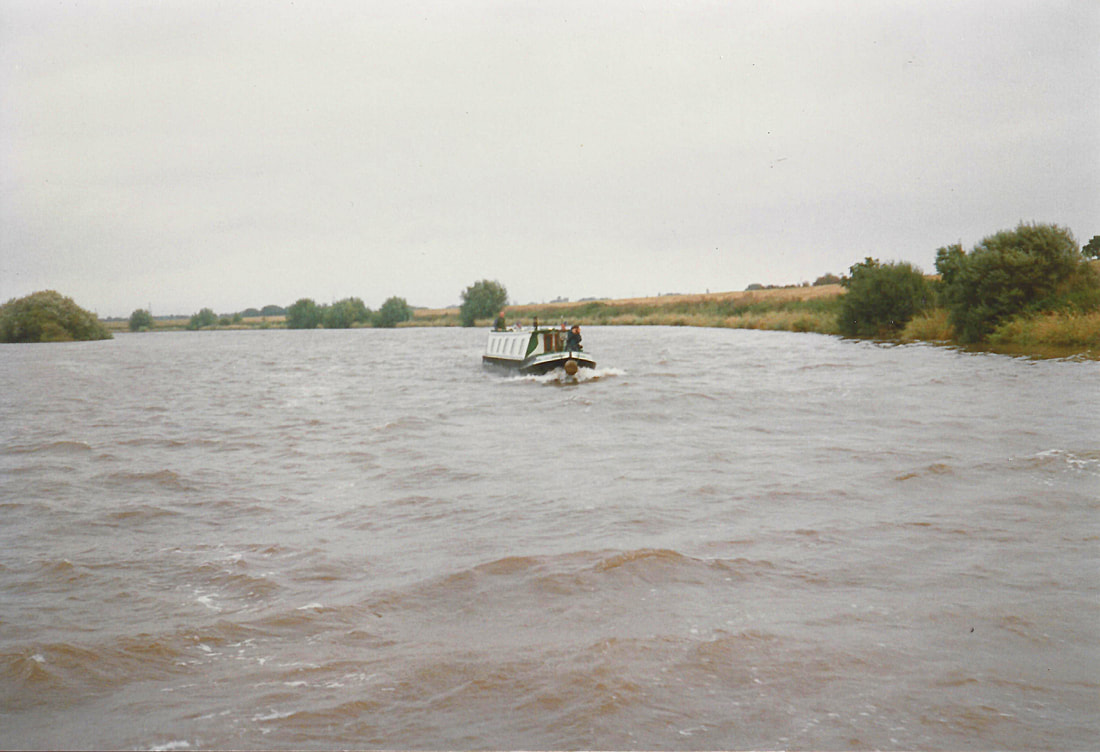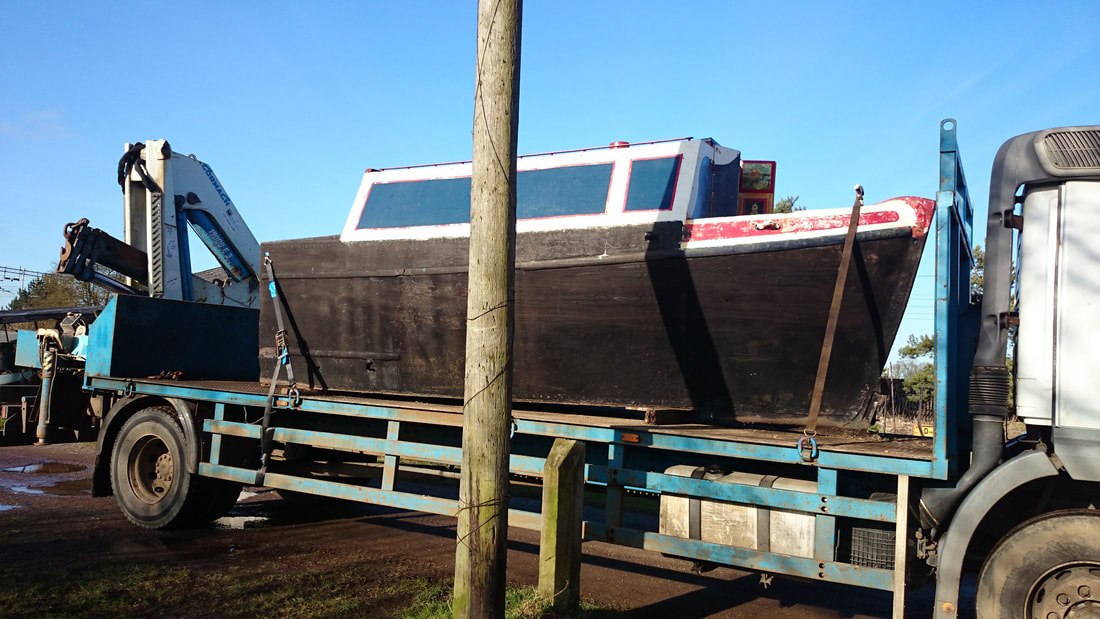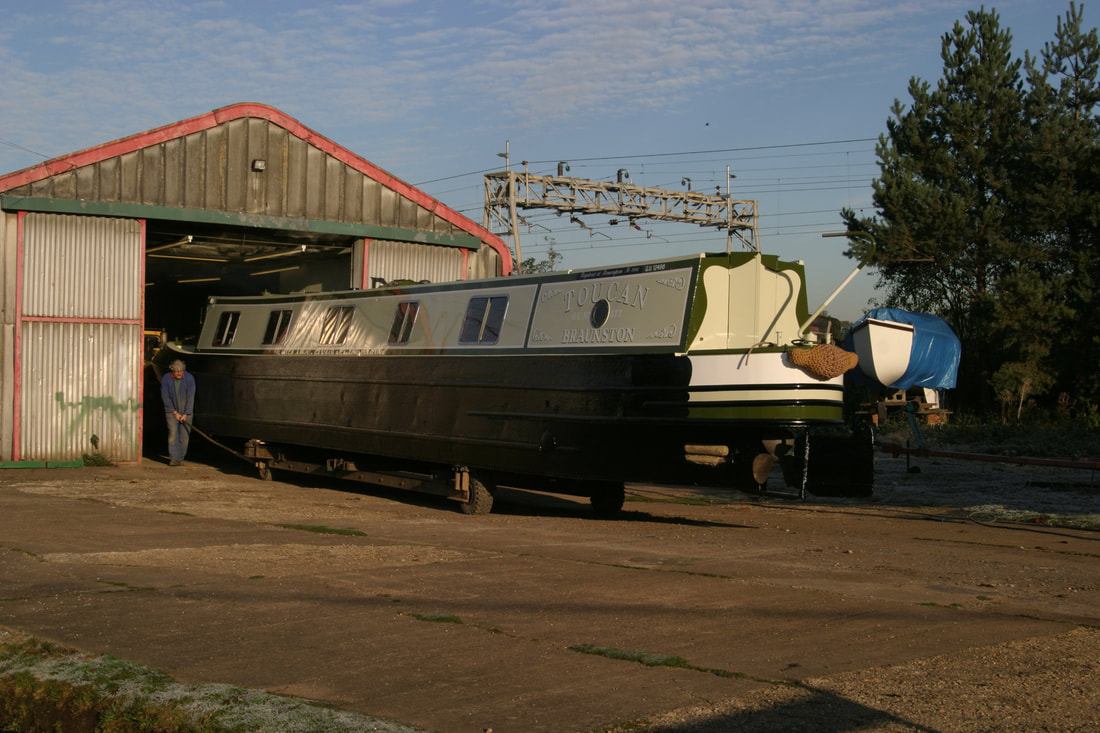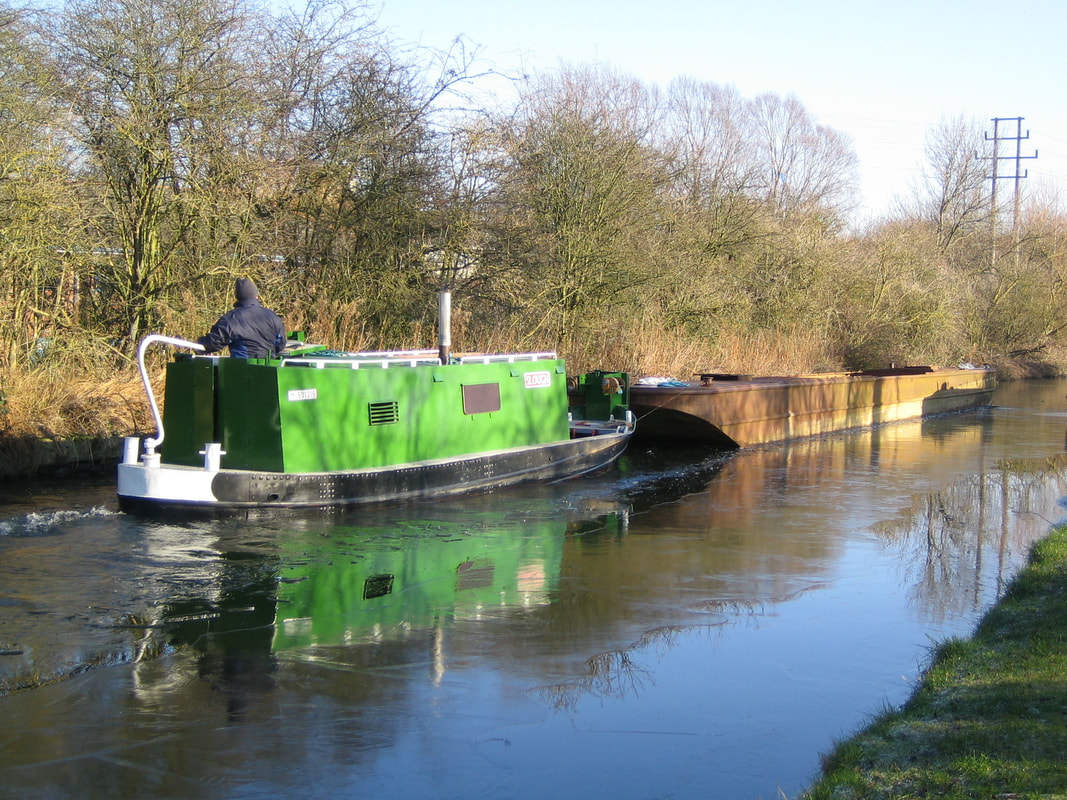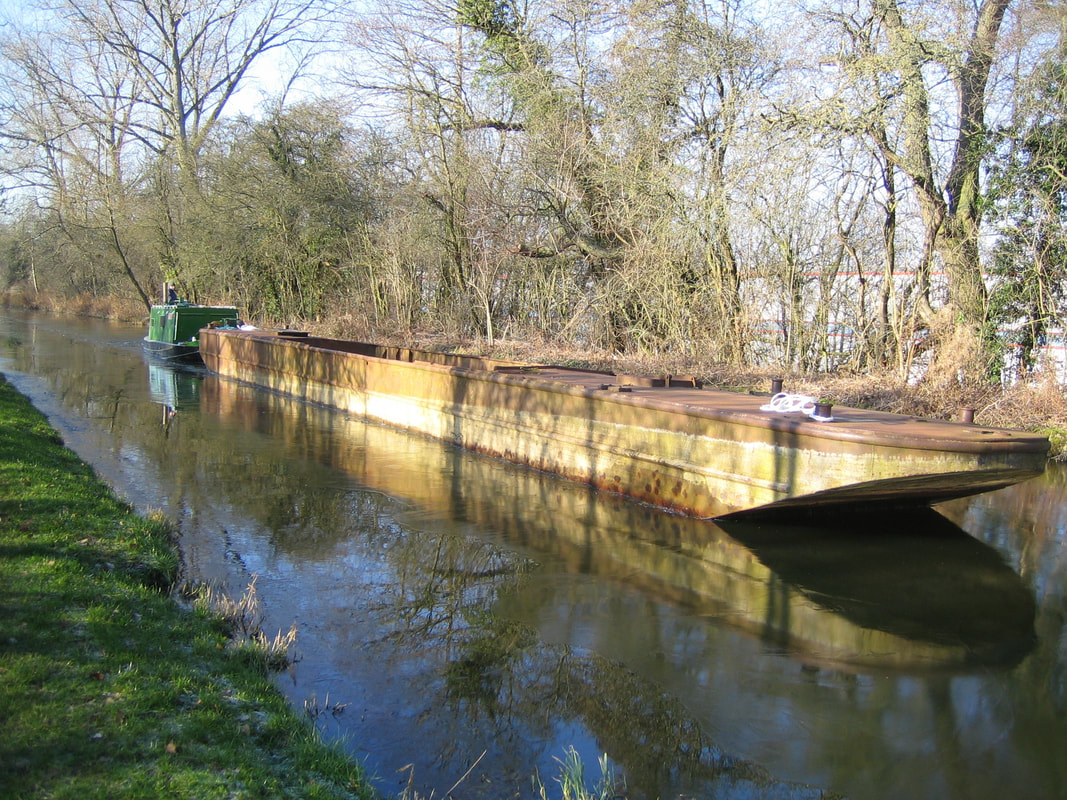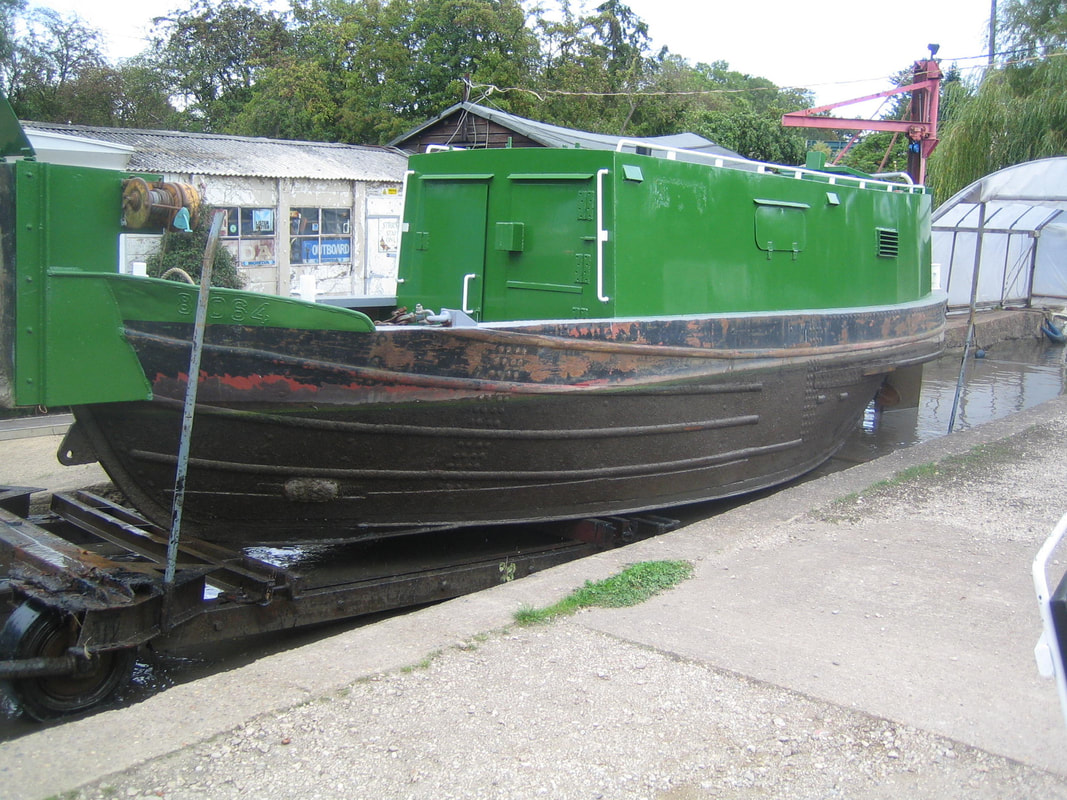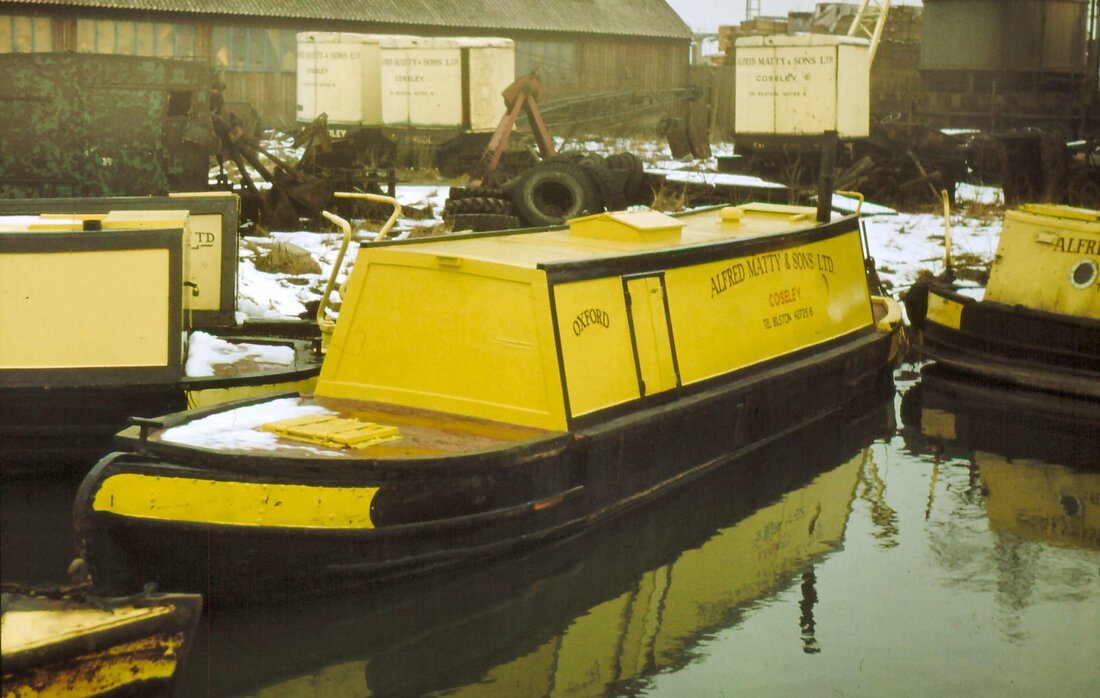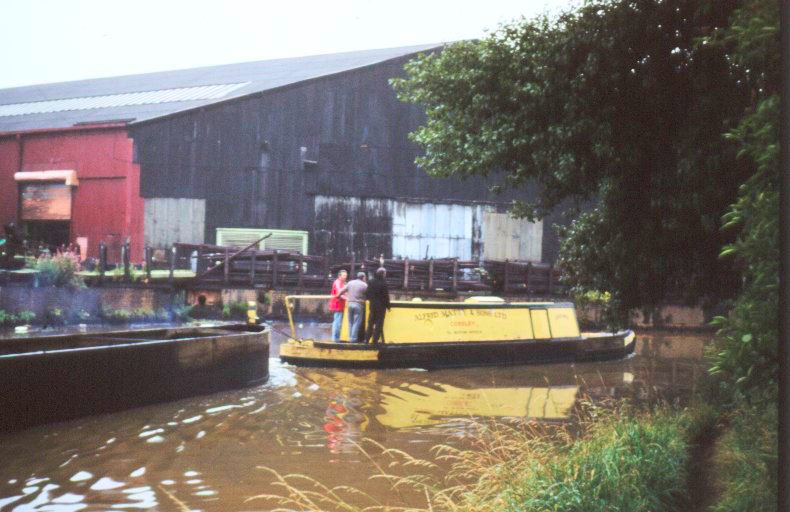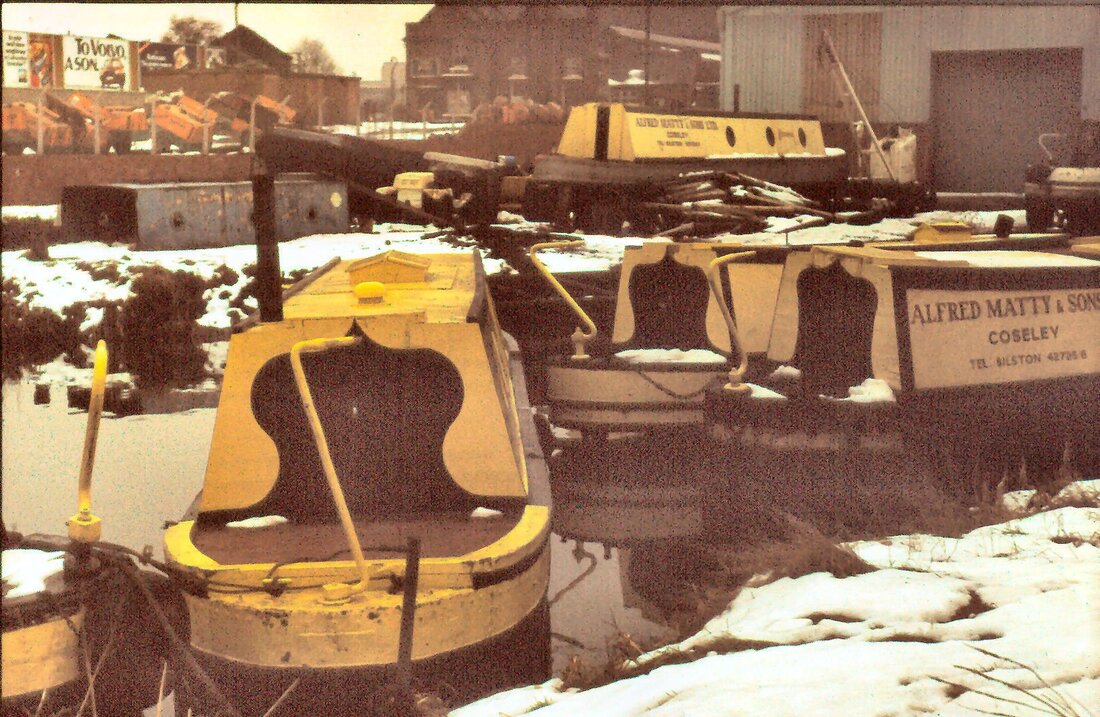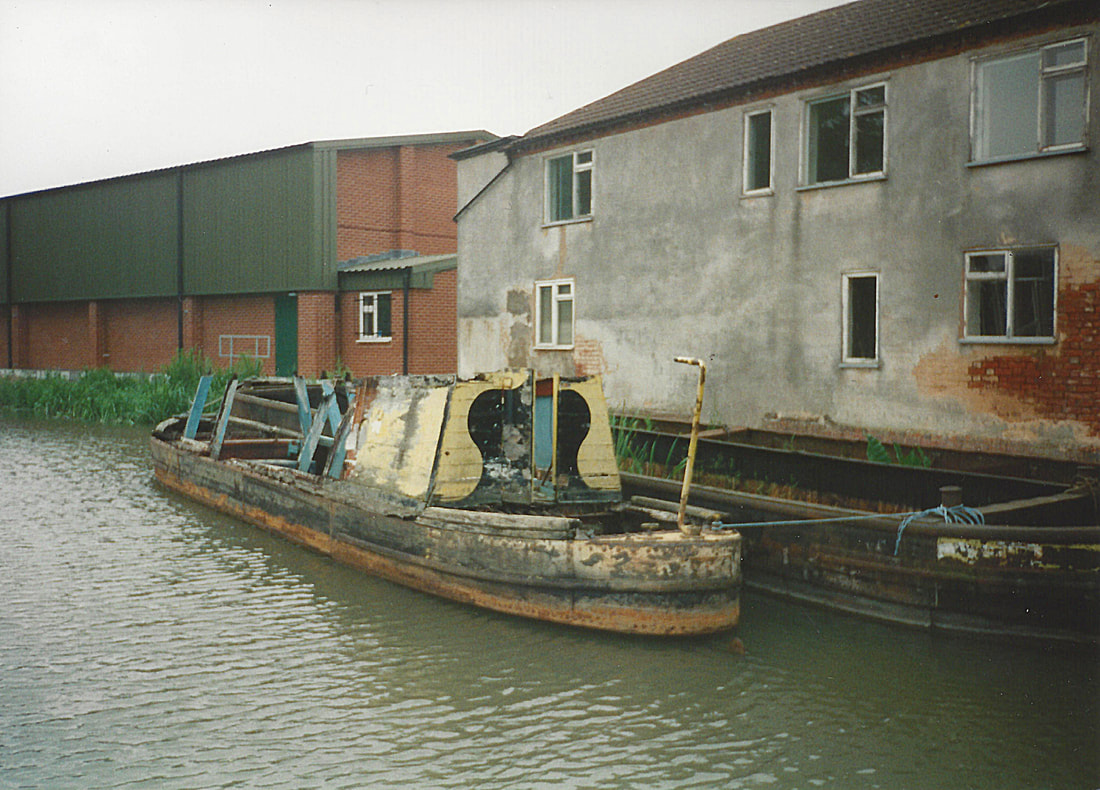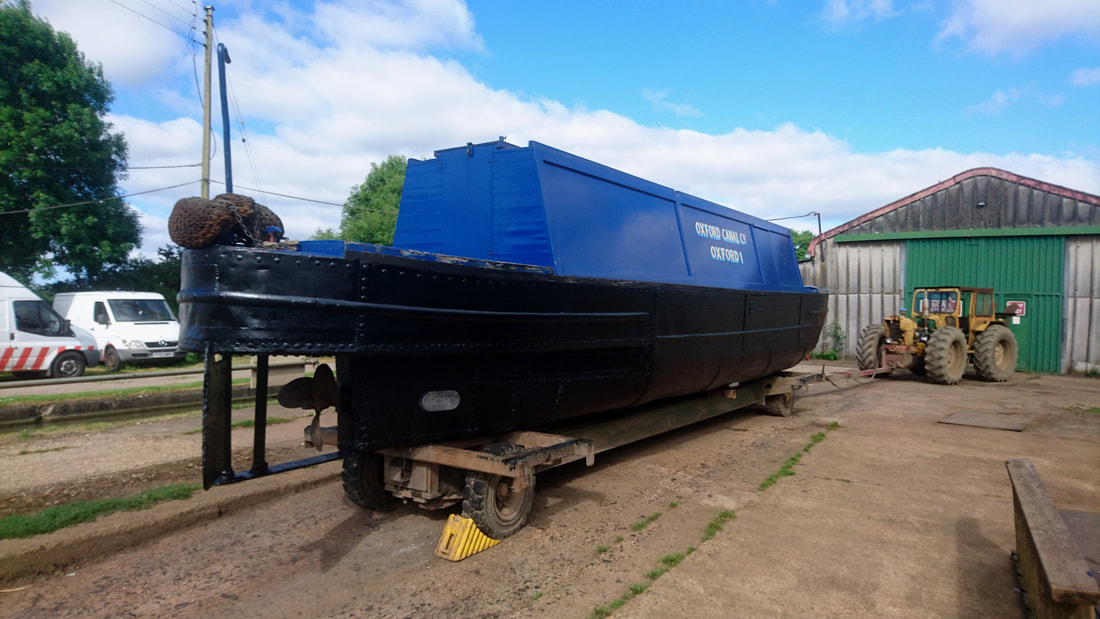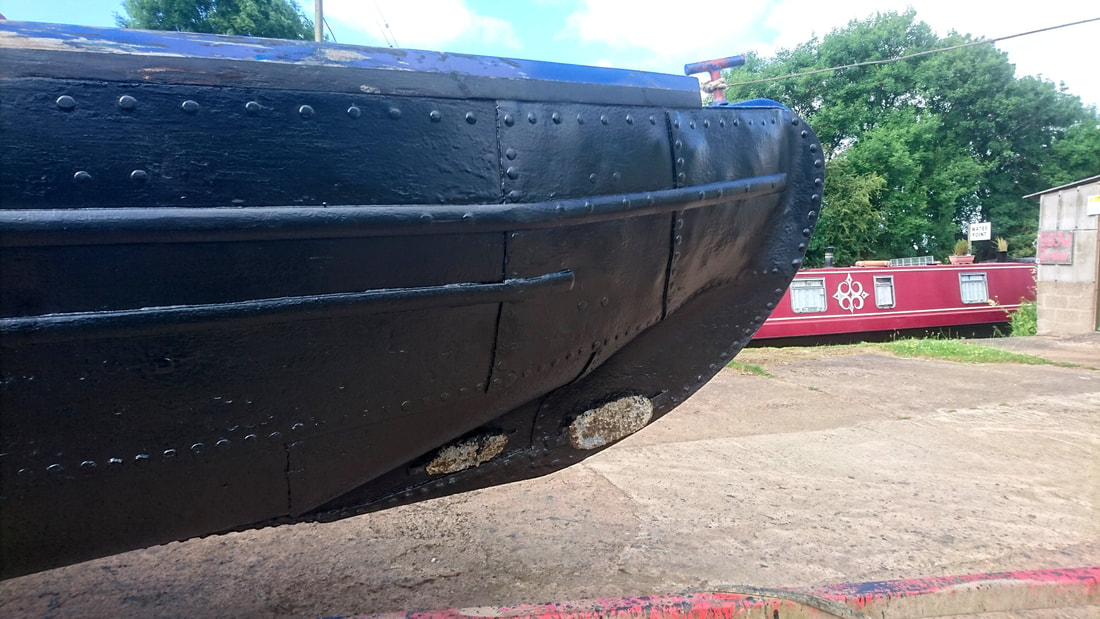BCN District No.1 Dredger
1873
1873
|
Spoon Dredger Bow
Spoon Dredger on the slipway for maintenance work
|
Built in 1873 by the Birmingham Canal Company, a hand operated spoon dredger of riveted iron construction; she now has a welded steel bottom and has always been manually propelled. After a long life as a Birmingham Canal Navigation maintenance vessel she finally came out of service in 1985 and is now the sole survivor of 4 maintenace boats built for the BCN.
70′ long with a 7′ beam, unpowered. She would have been bow-hauled, then horse-drawn and eventually by a tug. Restored in the late 2000’s by Malcolm Braine, a retired BCN boat builder well known for his work on historic vessels, she was on display at the Black Country Museum from 2009. In 2017 we were very honoured to be asked to take on the maintenance and operation of this unique vessel. Further restoration is ongoing but the boat can often be found on display at Rose Narrowboats and is also taken to historic boat gatherings towed behind Oxford No.1. |
Toucan
1935 GUCCCo “Little Northwich” Butty
1935 GUCCCo “Little Northwich” Butty
|
Toucan(right) near King’s Langley on the Grand Union Canal in the mid-1950s when paired with the motor boat Cassiopeia.
Toucan emerging from our workshops freshly painted.
|
Toucan was built on the River Weaver by WJ Yarwoods & Co,
shipbuilders at Northwich. Launched on 29th October 1935, she was part of a class of 24 71′ 6” long carrying boats with 4’2” deep iron sides and elm bottoms built for the Grand Union Canal Carrying Company known by the boatmen as “Little Northwiches”. Originally she was paired with the motor boat Sculptor, now preserved at the Boat Museum, Stoke Bruerne and they were both registered by the Birmingham Board of Health as dwellings in 1936. In 1962 she was leased to Willow Wren Canal Transport Services and worked for them up until 1969, carrying part of the last load of imported grain sent by water from London to Wellingborough Mill on the River Nene. With no further work, she was then returned to British Waterways and put into storage with a number of other boats on the Wendover Arm near Tring along with a number of other redundant carrying craft. A reprieve followed when in 1970 she was leased to Blue Line Carriers Ltd, successor to the famous Barlows fleet and moved to Braunston. They intended to refit her and put her into their small carrying fleet to replace their wooden butty Raymond, but before work commenced their last remaining contract was unexpectedly terminated. After a short period in store in Braunston reservoir Toucan once again found herself languishing at the end of the Wendover Arm with an uncertain future. By now in poor condition she was purchased in 1971 by M.E Braine Boatbuilders Ltd to be converted into a pleasure boat for A.V.Grantham MBE. She was towed to Norton Canes docks, near Cannock and hauled out of the water for the work to be carried out. The conversion was extensive, removing the last 17′ of the hull, building a new motor stern, replacing the elm bottom with steel and building a new pitch pine cabin on afromsia frames with Masonite cladding. The newly converted boat was fitted out to a high standard at Malcolm Braine’s yard and fitted with unique combination of a Standard 23c diesel engine built in the 1950s coupled to a Parsons F-type gearbox from the 1930s. With regular maintenance these are still going well after many hours of cruising. Remarkably the original stern was not scrapped, but restored by Malcolm Braine to form the centre piece of an exhibition at the NEC. It then formed part of a display at the National Garden festival in Stoke on Trent in 1985 before becoming a permanent exhibit at Great Haywood on the Trent & Mersey Canal where Malcolm Braine operated trip boats. The opportunity arose to purchase the stern end in 2015 so the two part of the boat are in the same ownership again after nearly 45 years. There are no plans to reunite the butty stern with the rest of the original hull – it has now been removed from the boat for longer than it was attached! However it will be restored again as a tribute to all those who have worked on the boat over the years. |
Slough
1935 GUCCCo “Little Woolwich” Motor Boat
1935 GUCCCo “Little Woolwich” Motor Boat
|
Slough pushing a hopper
Slough pushing a hopper
Slough
|
Originally called “Deimos” she was built by Harland and Wolff (of Titanic fame) in 1935 at their shipyard in Woolwich, London as part of a large class of motor and butty boats nicknamed “Little Woolwiches” by boatmen.
71’6″ long and 7’0 ½” beam, powered by a 2 cylinder National diesel engine of 18hp she would have carried up to 22 tons whilst towing a butty with another 25 tons of cargo on board. Shortly after World War 2 she was transferred to Gloucester for use as a maintenance boat in that area, losing her name at the same time. In the early 1970’s she was shortened and her engine removed, after which she seems to have spent a short time on the Mon & Brec Canals in Wales. In the mid-1970’s she was fitted with a powerful Lister HR3 engine and converted into a push tug, gaining her new name “Slough”. The heavy framing and winches on the bow enable her to be securely coupled to mud hoppers to move them around. British Waterways put her up for sale in 2009 and we were successful in our bid to purchase her. Some restoration and repair work has been carried out, but she is still regularly used for canal maintenance work. The Lister engine fitted in the 1970’s is still going strong after over 40 years. |
Oxford No.1
|
BCN tug Oxford at Matty’s yard.
Photo © www.laurencehoggproductions.co.uk BCN tug Oxford at Matty’s yard.
Photo © www.laurencehoggproductions.co.uk BCN tug Oxford at Matty’s yard.
Photo © www.laurencehoggproductions.co.uk Oxford No. 1 in the late 1990’s before restoration.
Oxford No. 1 on our slipway in 2017
the unsually fine bow and the rounded chines can clearly be seen. |
The movement of goods, particularly coal, was seen as of prime importance during World War II and the Ministry of War Transport was particularly concerned that a hard winter would cause major disruption to traffic if the canal froze. With this in mind the Oxford Canal Company was asked to have two new icebreaker tugs built and the MoWT would sanction the use of materials for them.
Harris Brother’s of Netherton, who had built a number of tugs for use on the Birmingham Canal Navigations, were asked to build the boats and the first one was delivered in 1943. As they were intended for icebreaking the bow was very fine, and the hull slightly narrower than usual with a rounded chine. The hull for the second boat was built by Harris’s in 1943, but the cabin and machinery were this time installed by Fellows Morton & Clayton Limited at their boatyard in Saltley, Birmingham. A wooden cabin was fitted with a stove and room for 6 men sit in, but the benches were wide enough that a crew of two could sleep on board overnight if necessary. The forward part of the cabin was taken up by a massive Lister engine which provided ample power for towing or icebreaking. The second boat was delivered in 1944 and immediately went to work on the northern section of the Oxford Canal, breaking ice in the winter and assisting with canal maintenance work in the summer. It would have passed through our boatyard at Stretton Stop regularly. Ownership transferred to the British Transport Commission when the Oxford Canal was nationalised in 1948, and at some point soon after the two tugs, known as Oxford No.1 and Oxford No.2 respectively swapped identities. The reasons for this are still unclear, but from surviving records and eyewitness accounts it is absolutely certain that the boat now known as Oxford No 1 was actually the second of the two boats built. By the early 1950s Oxford No. 1 had been transferred to icebreaking duties on the nearby Ashby Canal. We have recently had the boat out of the water for a hull inspection, and by an amazing coincidence a visitor to our yard recognised the boat and introduced himself Jim Moore – and he had been Oxford No.1’s steerer during this time. He has kindly shared some of the photo’s below with us and a number of tales of his time working the boat, including the time she was sunk near Hawkesbury Junction after a collision with a mud hopper! The original Lister JP3M engine was replaced in the mid 1950’s with a Petter PD3 and Parsons gearbox and sometime later the boat was transferred away from the area to the Grand Union Canal, based at Hatton near Warwick. We’ve found no records of her when she was there, but it seems it was not very long before British Waterways (successors to the British Transport Commission) decided she was surplus and she was purchased by Alfred Matty & Sons of Coseley. Matty’s had a large fleet of day boats and contracting boats based on the BCN and after a repaint into their bright yellow livery she was soon at work carrying out general towage around the Birmingham area. Trade was declining heavily at this time, with far more boats than there was work for them, and minimal money to repair them so when the crankshaft of the Petter engine broke in half the boat was laid up and became almost forgotten about until the late 1990s when after a chance conversation the remaining boats in Matty’s yard were sold as a job lot to a group of like minded enthusiasts. By now Oxford No.1 was completely derelict with most of the cabin missing, no engine and several holes in the hull. She briefly belonged to one of the future directors of Rose Narrowboats, but with other projects taking priority no major work was undertaken. After an approach was made by Pete Downer and his wife Diana the decision to sell the boat to him as he would carry out the restoration properly. The hull was in remarkably good condition despite being 50years old, and Pete Downer made sure that the areas requiring attention were thoroughly restored, including re-rivetting where necessary. Fortunately there was enough left of the original cabin frames along with surviving correspondence and drawings to accurately rebuild the cabin. The icing on the cake was the acquisition of a 1943 Lister JP3M which Pete overhauled and installed – it went straight back on to the original mounting points. The workmanship carried out by Pete is outstanding, and it is thanks to his dedication and interest in the history of the Oxford Canal that this boat has been restored to as-built condition. Harris’s built around 20 motor boats and as far as we know she is the only one in original condition. In 2017 after nearly two decades in their ownership Pete & Diana Downer decided it was time to sell the boat and true to a promise made in 1998 were kind enough to give us first refusal, so she is back in the Rose family again and based on the section of canal she was originally built to work on. She will continue to attend events and historic boat gatherings and makes a very appropriate tug to tow our historic BCN spoon dredger. |
